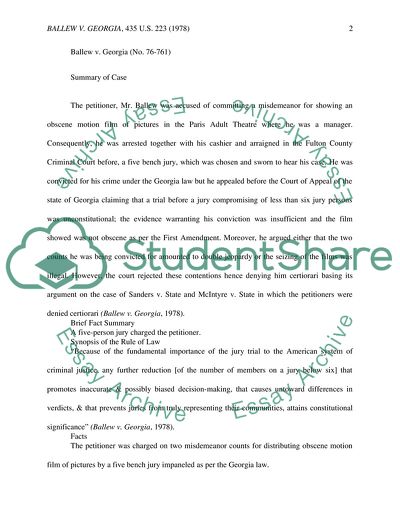Cite this document
(Analysis of Ballew v. Georgia, 435 U.S. 223 Case Study, n.d.)
Analysis of Ballew v. Georgia, 435 U.S. 223 Case Study. https://studentshare.org/law/1846285-case-study-2-ballew-v-georgia-435-us-223-1978
Analysis of Ballew v. Georgia, 435 U.S. 223 Case Study. https://studentshare.org/law/1846285-case-study-2-ballew-v-georgia-435-us-223-1978
(Analysis of Ballew V. Georgia, 435 U.S. 223 Case Study)
Analysis of Ballew V. Georgia, 435 U.S. 223 Case Study. https://studentshare.org/law/1846285-case-study-2-ballew-v-georgia-435-us-223-1978.
Analysis of Ballew V. Georgia, 435 U.S. 223 Case Study. https://studentshare.org/law/1846285-case-study-2-ballew-v-georgia-435-us-223-1978.
“Analysis of Ballew V. Georgia, 435 U.S. 223 Case Study”. https://studentshare.org/law/1846285-case-study-2-ballew-v-georgia-435-us-223-1978.


